|
Cracked Glass
(Click thumbnails for
larger images) |
|
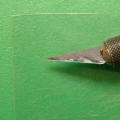 |
Materials & Equipment
Clear plastic
sheet (blister pack)
Craft knife
White acrylic
paint
Small paintbrush |
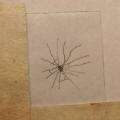 |
Stage 1
Using the
point of a sharp craft knife, scratch a pattern of cracks into the
surface of the plastic sheet. If you like you can draw out the design on
paper first and then scratch over the lines. |
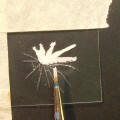 |
Stage 2
Paint the
scratched area with the white acrylic paint. Be sure to get paint into
all the cracks you made, and don't worry about any paint that goes
outside the lines. |
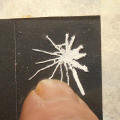 |
Stage 3
Allow the
paint to dry, then scrape off the excess. I used my fingernail but you
could use some kind of tool if you prefer - but be careful that it
doesn't scratch the plastic.
|
 |
Stage 4
Cut the
plastic sheet to size to fit into your window frame.
|
 |
Stage 5
Cut a small
hole in the centre of the damage if you want to add a little variation. |
|
Fine Frosted Glass
(Click thumbnails for
larger images) |
|
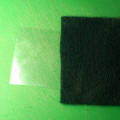 |
Materials & Equipment
Clear plastic
sheet (blister pack)
Nylon pan
scourer
Craft knife or sharp scissors |
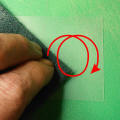 |
Stage 1
Using the pan scourer, thoroughly scrub
one side of the clear plastic. |
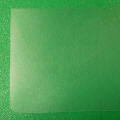 |
Stage 2
The result is
a sheet which is less transparent, like frosted glass. |
|
 |
Stage 3
If you want to
make the material even less transparent, turn over the sheet and scrub
it on the other side too. |
 |
Results
This plastic
has been scrubbed all over on one side, and half of it has been scrubbed
on both sides to show the different effects. |
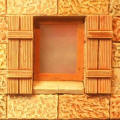 |
Stage 4
Cut the
plastic sheet to size to fit into your window frame.
|
|
Rain Glass
(Click thumbnails for
larger images) |
|
 |
Materials & Equipment
Clear plastic
sheet (blister pack)
PVA Glue
Bristle
Paintbrush
Craft knife or sharp scissors |
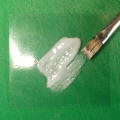 |
Stage 1
Add some PVA to the plastic and spread it over the whole
area using the paintbrush. |
 |
Stage 2
Continue
brushing through the PVA keeping your brush strokes in the same
direction. Ideally, you want to get a series of fine lines all over the
area with no large even patches of PVA. |
|
 |
Results
Once the PVA
has dried completely, it becomes transparent with a texture that
resembles rain glass.
|
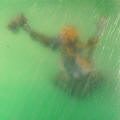 |
Stage 3
If you want
the glass to be more opaque, simply scrub the reverse side of the
plastic with a nylon pan scourer as described
in Fine Frosted Glass, above.
The same sheet
of plastic with the back scrubbed to reduce the transparency.
|
 |
Stage 4
Cut the
plastic sheet to size to fit into your window frame.
|
|
Leaded Glass from
Packaging
(Click thumbnails for
larger images) |
|
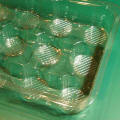 |
Materials & Equipment
Clear plastic
packaging
Black acrylic
paint or Sharpie
Gunmetal acrylic
paint or silver Sharpie
Paint brush
Craft knife or
sharp scissors |
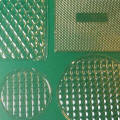 |
Here are some
pieces of different plastic packaging with grid patterns moulded in.
Check the crates filled with multiple tubs or bottles at the
supermarket, and you can probably get a load for free. |
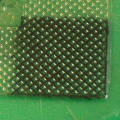 |
Stage 1
Turn the
plastic so that the moulded lines are on the upper surface. Either
drybrush with black paint or use a black Sharpie to colour the lines.
Allow to dry. |
 |
Stage 2
Drybrush
gunmetal over the top of the black, or use a metallic silver Sharpie to
add a highlight. |
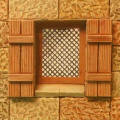 |
Stage 3
Cut the
plastic sheet to size to fit into your window frame.
|
|
|
|
Milky Frosted
Glass
(Click thumbnails for
larger images) |
|
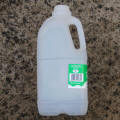 |
Materials & Equipment
Empty plastic
milk bottle
Craft knife /
sharp scissors
|
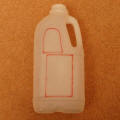 |
Stage 1
Wash and dry the milk bottle,
and remove the label. Cut out one or more of the flat panels as shown. |
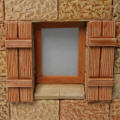 |
Stage 2
Cut the
plastic to size to fit into your window frame. The result resembles
heavily frosted glass. |
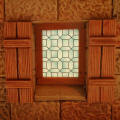 |
Example 1
These panels
also make great diffusers for backlighting. Here is an example of a
printed acetate window with a piece of milk bottle behind.
Printed Glass |
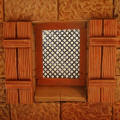 |
Example 2
Backlit
picture with the milk bottle plastic behind a leaded window from
packaging plastic.
Leaded Glass |
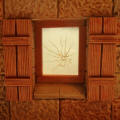 |
Example 3
Backlit
picture with the milk bottle plastic behind a cracked glass pane.
Cracked Glass |
|
Mirrored Glass
(Click thumbnails for
larger images) |
|
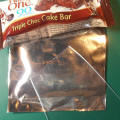 |
Materials & Equipment
Clear plastic
sheet (blister pack)
Mylar sheet or
mirrored packaging
Craft knife or
sharp scissors
Pledge Floor
Polish
Paint brush
|
 |
Stage 1
Cut the clear
plastic to the right size to fit the mirror frame. The larger the piece,
the longer it may take to dry. |
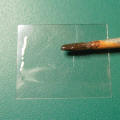 |
Stage 2
Using the
paintbrush, apply an even coat of floor polish to the clear plastic
sheet. |
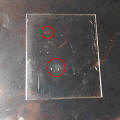 |
Stage 3
Press the wet
side of the plastic onto the mirrored material. Apply pressure if needed
to remove any air-bubbles (circled) between the two layers. Leave to dry - this
could take several hours. |
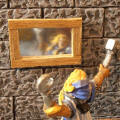 |
Example 1
The resulting
piece makes a pretty good mirror. |
 |
Example 2
The mirrored
material can also be applied to the back of windows, to prevent any view
through the glass and giving the illusion of depth. |
|
Mirrors with Foxing
(Click thumbnails for
larger images)
Foxing occurs when a mirror's silvering
reacts with the air, causing dark spots which no longer reflect. |
|
 |
Materials & Tools:
Clear plastic
sheet (blister pack)
Mylar sheet or
mirrored packaging
Craft knife
Pledge Floor
Polish
Paint and
brushes
Card (cereal
pack)
PVA
Masking tape
|
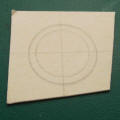 |
Stage 1
Draw the shape
of the mirror frame onto a piece of card. |
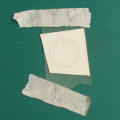 |
Stage 2
Attach a piece
of the clear plastic sheet on top of the card with masking tape. |
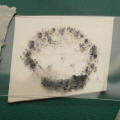 |
Stage 3
Stipple a mix
of black and silver paint onto the clear plastic. Remember that the
frame will cover everything but the innermost part. |
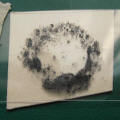 |
Stage 4
You can have
some more solid areas of paint at the outside edges, too. Allow the
paint to dry thoroughly. |
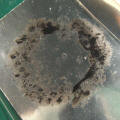 |
Stage 5
Use a small
drop of the floor polish to adhere the painted face of the plastic to a
piece of the mirrored packaging.
Press firmly, put a heavy book or two on top and leave to dry. |
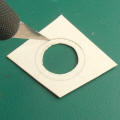 |
Stage 6
Cut out the
frame you drew at the beginning with a sharp knife.
|
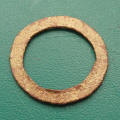 |
Stage 7
Paint the
frame - I wanted it to look old so I opted for a bronze colour with a
little gold stippled on top.
|
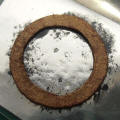 |
Stage 8
Once dry,
attach the frame in place over the stippled area of the mirror with a
very small amount of PVA glue. |
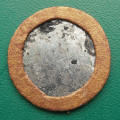 |
Stage 9
Once
everything has dried thoroughly, trim the plastic to the size of the mirror frame. |
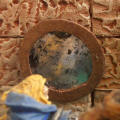 |
Example 1
The finished
mirror with areas of foxing blocking the reflection. |
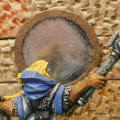 |
Example 2
A slightly
larger mirror with a little less foxing.
|

